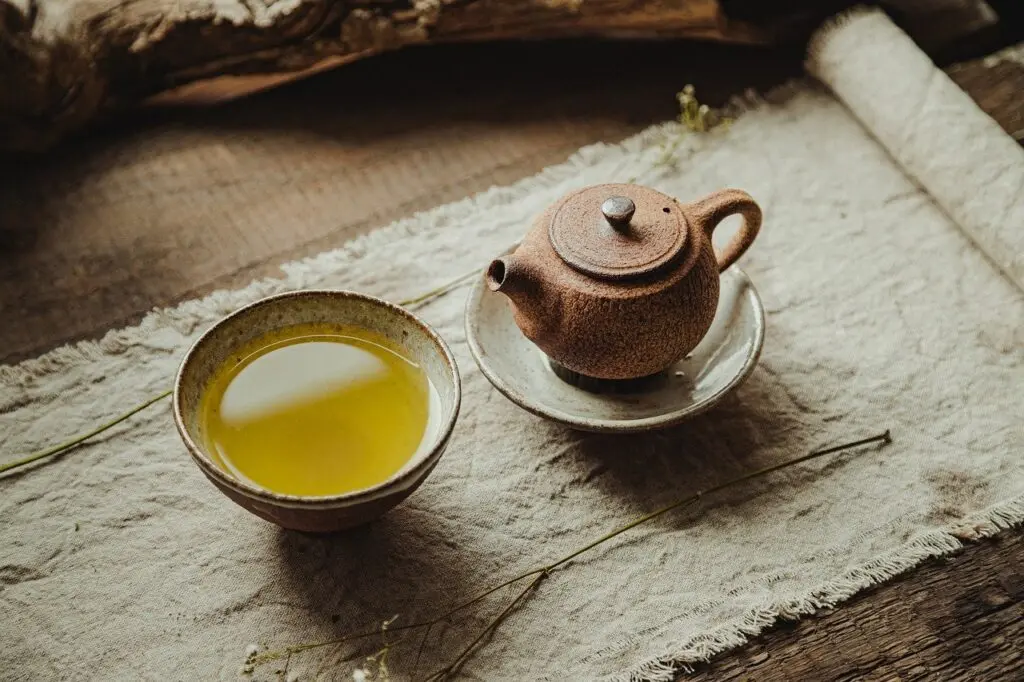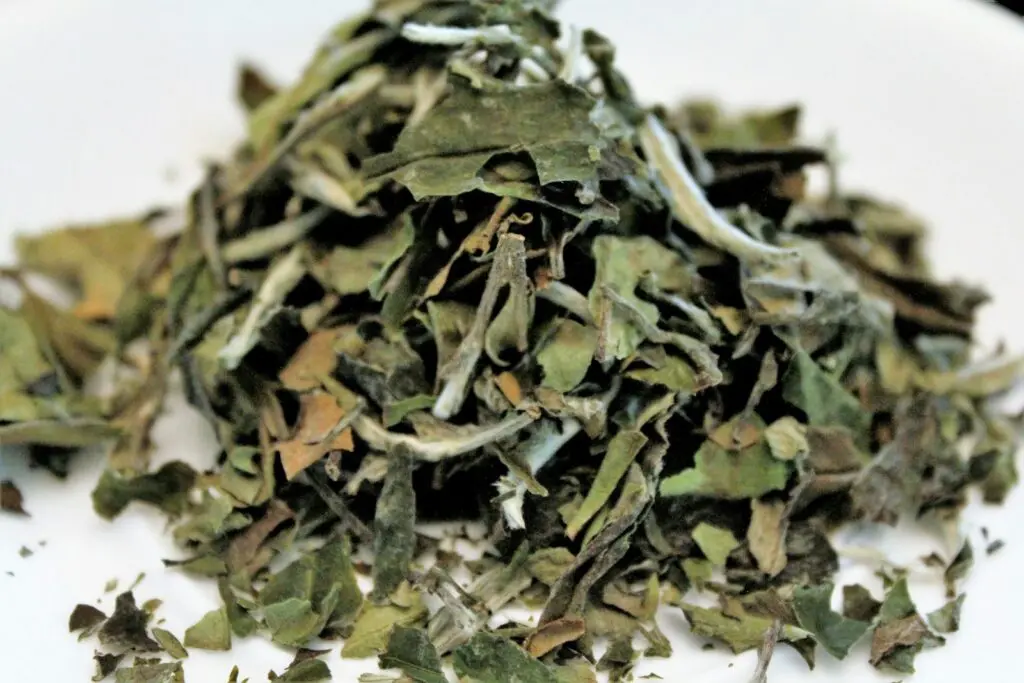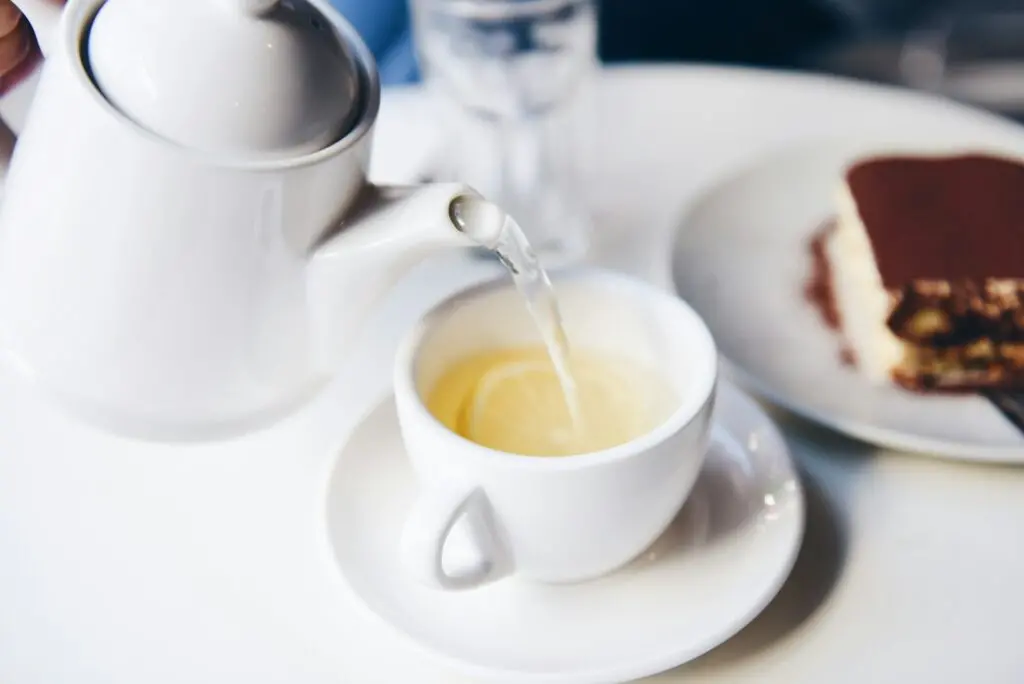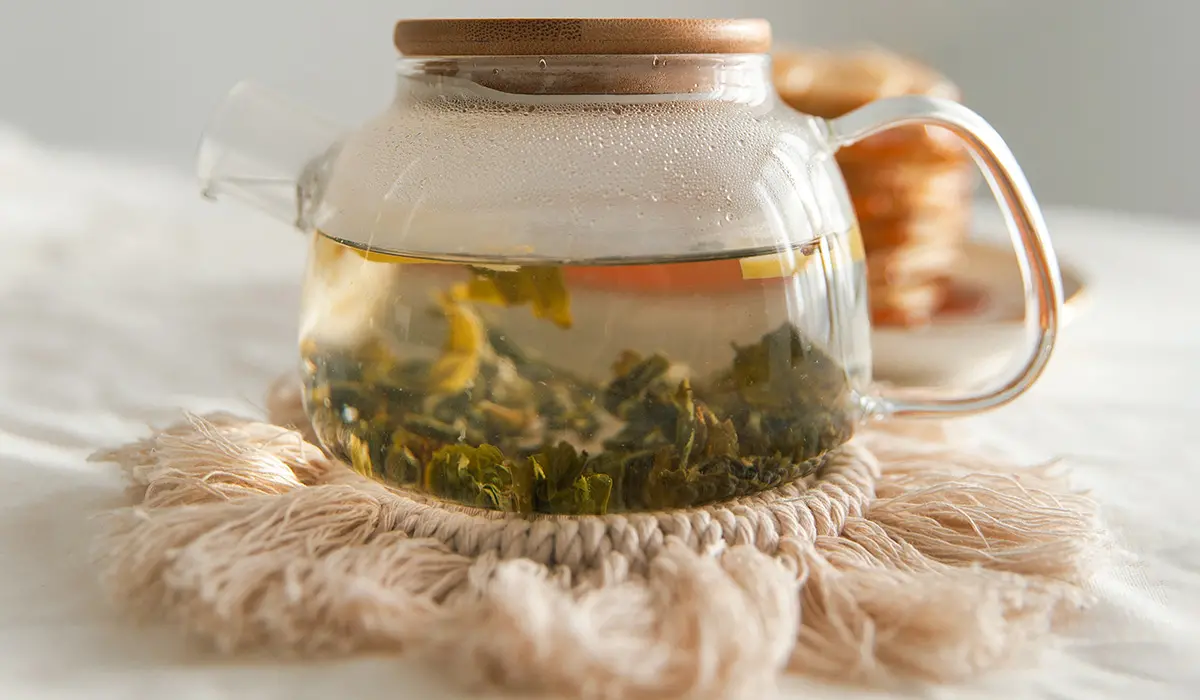Introduction
White tea, often regarded as the most delicate among tea varieties, offers a unique tapestry of flavour and health benefits that have captivated tea enthusiasts for centuries. Originating from the Camellia sinensis plant, white tea is primarily produced in China, though its cultivation has expanded into other regions, including India and Sri Lanka. Unlike its more oxidized counterparts—green, oolong, and black teas—white tea retains a minimalist approach in its processing, making it a true testament to the purity of tea leaves.
This gentle beverage is crafted from the youngest leaves and unopened buds of the tea plant, which are carefully plucked during the first few days of spring. The leaves are then allowed to wither in natural sunlight, preventing any significant oxidation and preserving their delicate flavour profile. As a result, white tea boasts a subtle sweetness paired with a soft, floral aroma, making it a favourite among those seeking a refined tea experience.
In this article, we will delve into the origins of white tea, explore its numerous health benefits, and offer insights into the best brewing techniques to enjoy this exquisite beverage. From its rich history to its preparation, white tea is more than just a drink; it is a cultural experience waiting to be discovered. Whether you are a seasoned tea aficionado or a curious newcomer, join us as we embark on a journey to uncover the elegance and charm of white tea.

Origins of White Tea
The history of white tea can be traced back to ancient China, where it is believed to have originated during the Tang Dynasty (618-907 AD). Historically, white tea was revered for its rarity and purity, often reserved for Chinese emperors and their courts. The name “white tea” derives from the fine, silvery-white hairs found on the young buds and leaves of the tea plant, which gives the tea its distinctive appearance and subtly hints at its delicate flavour.
The most famous region for white tea production is Fujian Province, particularly around the city of Fuding and the neighbouring area of Zhenghe. Here, the traditional methods of cultivation and harvesting have been passed down through generations, ensuring that the craft of white tea making remains unchanged. Fuding is particularly known for producing “Bai Hao Yinzhen” (Silver Needle), which consists exclusively of unopened buds, and “Bai Mu Dan” (White Peony), which includes both buds and young leaves. These teas have come to represent the pinnacle of white tea quality.
While white tea has deep roots in Chinese culture, its popularity has expanded globally over the past few decades. With an increasing awareness of the health benefits associated with tea consumption, white tea has found its way into the hearts of tea lovers around the world. Today, countries such as India and Sri Lanka have begun to cultivate their versions of white tea, incorporating their agricultural practices and regional characteristics into the production process.
As white tea garners a more substantial place on the international stage, it continues to embody the values of craftsmanship and tradition that have characterized its history for centuries. The process of harvesting the tender leaves, the care taken to prevent oxidation, and the meticulous drying methods serve as a testament to the dedication of tea artisans. By understanding the rich historical context of white tea, one can appreciate not only its exquisite taste but also the cultural significance it holds in the world of tea.
Types of White Tea
When it comes to white tea, the distinction lies not only in the processing but also in the specific types derived from the Camellia sinensis plant. Each variety offers a unique flavour profile and character, making the exploration of these types a delightful journey for any tea enthusiast. Here are some of the most celebrated types of white tea:
1. Silver Needle (Bai Hao Yinzhen)
Silver Needle is often regarded as the pinnacle of white tea. It is made exclusively from the finest unopened buds of the tea plant, which are hand-picked during the early spring months. The leaves possess a soft, silvery-white hue, reflecting their delicate nature. This tea is known for its sweet, delicately floral aroma, and its flavour is smooth, subtle, and refreshing. Silver Needle is typically brewed at a lower temperature to preserve its gentle notes, making it a favourite among purists.
2. White Peony (Bai Mu Dan)
White Peony is a slightly more robust option compared to Silver Needle, incorporating both buds and young leaves. This combination creates a richer infusion, with a more pronounced taste profile that includes floral and fruity undertones. The presence of young leaves contributes a touch of sweetness and a fuller body, making it an excellent option for those new to white tea. White Peony is versatile in brewing, and it can be steeped multiple times, each infusion revealing different layers of flavour.
3. Tribute Eyebrow (Gong Mei)
Traditionally produced in smaller quantities, Tribute Eyebrow is often considered a gem among white teas. It is made from a blend of leaves and buds that have been carefully selected and picked in early spring. This tea has a more robust flavour profile compared to its counterparts, featuring a mingling of earthy and slightly sweet notes. Tribute Eyebrow can withstand slightly higher brewing temperatures and longer steeping times, offering a unique tasting experience that develops complexity with each infusion.
4. Shou Mei
Shou Mei, meaning “Longevity Eyebrow,” is considered a lower grade of white tea but still possesses its charm. Crafted from more mature leaves, this tea includes a mix of both buds and older leaves. The flavour profile is robust and full-bodied, with a somewhat darker infusion than the other types of white tea. Shou Mei offers a rich, fruity flavour that can appeal to those who prefer a tea with more depth. It holds up well to higher temperatures and longer steeping, allowing for a delightful tasting experience.
5. Other Varietals
While the aforementioned types are the most recognized within the white tea category, various cultivars and regional specialties are cultivated around the world. For instance, some tea-producing regions in India and Sri Lanka have begun experimenting with white tea production, creating unique blends that draw from their local terroir. These varietals may include different plant hybrids, resulting in distinct flavours, aromas, and health properties that further enrich the white tea landscape.
Health Benefits of White Tea
White tea is not only prized for its delicate flavours and aromas but also celebrated for its impressive health benefits. Derived from the young buds and leaves of the Camellia sinensis plant, this tea is minimally processed, allowing it to retain a high concentration of antioxidants and beneficial compounds. Here are some of the notable health benefits of white tea:
1. Rich in Antioxidants
White tea is loaded with antioxidants, particularly catechins, which are known for their ability to combat oxidative stress. These antioxidants help neutralize free radicals in the body, reducing cell damage and lowering the risk of chronic diseases, such as heart disease and cancer. The high antioxidant content makes white tea an excellent choice for those looking to boost their overall health.
2. Promotes Heart Health
Studies suggest that regular consumption of white tea may enhance cardiovascular health. The antioxidants in white tea can help improve blood flow, reduce cholesterol levels, and lower blood pressure. By supporting endothelial function—the lining of blood vessels—white tea contributes to a healthier circulatory system and may reduce the risk of heart-related issues.
3. Supports Skin Health
The antioxidant and anti-inflammatory properties of white tea offer potential benefits for skin health as well. It has been shown to protect the skin from UV damage, reducing the risk of sunburn and premature aging. Additionally, white tea may help improve skin hydration and elasticity, making it a popular ingredient in skincare products.
4. Aids in Weight Management
For those looking to maintain a healthy weight, white tea could be a valuable ally. Some studies indicate that the catechins in white tea may promote fat oxidation and boost metabolism, making it easier to manage weight when combined with a balanced diet and regular exercise. By integrating white tea into a healthy lifestyle, individuals may find it beneficial for their weight management goals.
5. Enhances Mental Clarity
The caffeine content in white tea is generally lower than that of green and black teas, making it an excellent option for those sensitive to caffeine. However, white tea still contains enough caffeine to provide a gentle energy boost and improve mental clarity without the jitters often associated with stronger caffeinated drinks. The presence of the amino acid L-theanine further enhances focus and promotes a state of calm alertness.
6. Supports Immune Function
The polyphenols present in white tea have been shown to enhance the body’s immune response. Regular consumption may help fend off common colds and infections by strengthening the immune system and providing greater resistance against pathogens. The antibacterial properties of white tea also contribute to oral health, as it can inhibit the growth of harmful bacteria in the mouth.

Brewing Techniques for White Tea
Brewing white tea is an art that requires attention to detail to extract its delicate flavours and health benefits. Unlike other types of tea, white tea is less processed, which means it retains more of its natural attributes. Here are some key brewing techniques to ensure you enjoy the perfect cup of white tea.
1. Choose the Right Tea
Selecting high-quality white tea is paramount. Look for pure varieties like Silver Needle (Bai Hao Yinzhen) or White Peony (Bai Mudan). These teas are made from young leaves and buds, offering the best flavour and health benefits. Good white tea should have a gentle floral or fruity aroma.
2. Water Temperature
One of the most critical factors in brewing white tea is water temperature. It is best to use water that is around 160°F to 185°F (70°C to 85°C). Water that is too hot can result in a bitter taste, overshadowing the tea’s delicate nuances. If you don’t have a thermometer, allow water to come to a boil, then let it cool for about 5 minutes before pouring it over the tea.
3. Tea-to-Water Ratio
The amount of tea you use is vital for achieving the desired flavour strength. As a general guideline, use about 2 to 3 grams of white tea leaves (approximately 1 to 2 teaspoons) for every 8 ounces (240 ml) of water. Feel free to adjust this ratio based on your taste preferences.
4. Steeping Time
White tea requires a longer steeping time than other teas due to its gentle nature. Allow the leaves to steep for 4 to 6 minutes. For herbal enthusiasts who prefer a bolder flavour, multiple infusions of the same leaves can be made—the flavour will evolve and change with each infusion.
5. Mind Your Teaware
Using the right teaware enhances the brewing experience. Glass teapots or teacups are excellent choices as they allow you to observe the beautiful infusion of leaves. Yixing clay teapots can also be used, as they help retain heat, promoting a consistent brew.
6. Experiment and Personalize
Don’t be afraid to experiment! Everyone has different preferences when it comes to flavour intensity and brewing style. Try varying the steep time, water temperature, or even the type of white tea to find what best suits your palate.

Tasting Notes and Flavor Profiles
White tea is renowned for its delicate, nuanced flavour profiles that can vary significantly depending on the type of tea and the conditions in which it is grown. Here, we dive into the unique tasting notes and profiles of some popular white tea varieties, helping you to appreciate what each has to offer.
1. Silver Needle (Bai Hao Yinzhen)
Silver Needle is one of the most prized white teas, composed solely of young buds. Its flavour is incredibly subtle and ethereal, often described as sweet, floral, and light. The aroma is comparable to freshly cut hay or sweet meadow blooms, while the taste imparts notes of honeysuckle and a hint of melon. The smooth, silky mouthfeel rounds out the experience, making it a favourite among tea connoisseurs.
2. White Peony (Bai Mudan)
White Peony features both leaves and tender buds, giving it a slightly more robust flavour compared to Silver Needle. It has a floral aroma with undertones of creaminess and fruit. Tasting notes often include hints of apricot, peach, and a subtle grassy character, creating a balance between sweetness and a gentle, grassy finish. The infusion is usually a pale yellow-green, hinting at its refreshing nature.
3. Shou Mei
Shou Mei, which translates to “Noble Beauties,” is a darker white tea with a more complex flavour profile. Often made from slightly older leaves, it introduces deeper, more robust flavours, such as dried fruit, wood, and earthy undertones. The aroma can evoke imagery of hot summer days, reminiscent of sun-dried fruits or a fragrant forest. Shou Mei tends to be a bit bolder, making it an excellent choice for those looking for a more pronounced tea experience.
4. Gong Mei
Gong Mei is another variety that typically features older leaves and exhibits a rich, full-bodied character. It has a pleasing balance of sweetness and strength, with tasting notes that may include honey, caramel, and a slight nuttiness. The aroma often has hints of toasted nuts and will create an inviting environment during the brewing process.
5. Flavor Variability by Region
The flavour profiles of white tea can also be influenced by several factors, including the region of growth, elevation, and seasonal conditions. For instance, white tea grown in the high mountains of Fujian may have a crisper and more vibrant flavour than that sourced from lower elevations. Moreover, teas harvested during different seasons—spring versus summer—tend to yield distinct profiles, with spring harvests often showcasing more delicate and fruity characteristics.
Pairing White Tea with Food
The delicate flavour profile of white tea provides an excellent backdrop for food pairings, enhancing the dining experience without overpowering the palate. Here are some thoughtful suggestions on how to enjoy white tea with various dishes:
1. Light Appetizers and Salads
White tea’s subtle sweetness and floral notes make it a perfect companion for light appetizers and salads. Consider brewing a pot of Silver Needle or White Peony to enjoy alongside salads featuring fresh greens, fruits, and light vinaigrettes. The tea’s fruity undertones can complement dishes with ingredients like strawberries, avocados, and citrus, enhancing their natural flavours without overwhelming them.
2. Seafood Dishes
The gentle character of white tea pairs beautifully with seafood. Grilled fish like cod or halibut, as well as shellfish such as shrimp or scallops, work particularly well. The clean taste of the tea complements the freshness of the seafood, while its slight creaminess can enhance buttery sauces or preparations. For an added touch, serve it with a squeeze of lemon to elevate both the tea and the seafood.
3. Cheese and Charcuterie Boards
White tea serves as an excellent accompaniment to cheese and charcuterie boards. Soft cheeses like Brie or Goat cheese pair beautifully with the mild, smooth qualities of white tea, while cured meats, such as prosciutto, bring in a flavorful contrast. Choose White Peony for its fruity nuances, which can enhance assorted cheeses, dried fruits, and nuts on the platter.
4. Desserts
For dessert pairings, opt for lighter options that echo the elegance of white tea. Delicate pastries, fruit tarts, or panna cotta can harmonize remarkably well. The airy sweetness of white tea complements desserts that feature vanilla, almond, or light berry flavours, creating a harmonious balance that lingers on the palate.
5. Spicy Dishes
While white tea is often enjoyed with milder fare, it can also balance out spicy dishes. The cooling sensation of the tea helps to temper heat and cleanse the palate between bites. Try pairing it with lightly spiced Asian cuisine or Thai dishes that feature fresh herbs and aromatic ingredients.
6. Seasonal Pairings
Seasonal dishes can also work well with white tea. Springtime offerings like asparagus risotto or light pasta salads benefit from the refreshing qualities of white tea, while autumnal flavours, such as pumpkin soup or roasted root vegetables, can be paired with more robust varieties like Shou Mei, which enhances the earthiness of the ingredients.
Conclusion
In conclusion, white tea is a versatile beverage that transcends mere refreshment; it is an experience to be savoured in a variety of settings. Its delicate flavour profile and nuanced characteristics make it an ideal companion for a range of dishes, from the light and fresh to the rich and hearty. By understanding the distinct varieties of white tea—each offering its unique taste and aroma—you can elevate your culinary adventures.
When selecting food to pair with your white tea, consider not only the flavours but also the seasonality of the ingredients. The adaptability of white tea allows it to be enjoyed year-round, whether accompanying spring vegetables or autumn comfort foods. Its subtle flavours can enhance meals without overshadowing them, making it a thoughtful choice for any dining occasion.



Leave a Reply
You must be logged in to post a comment.